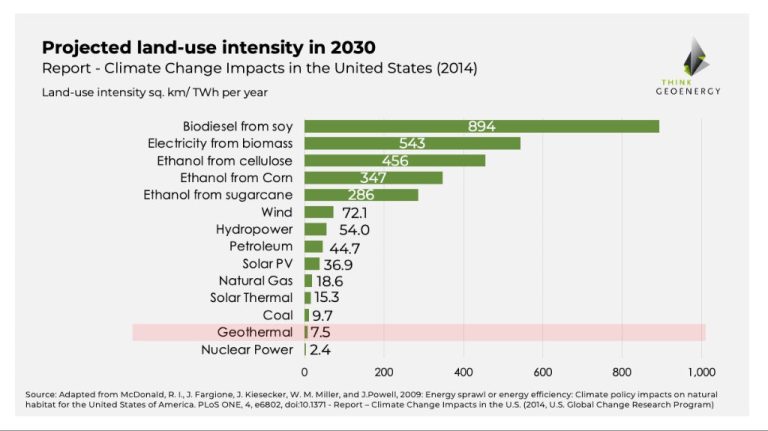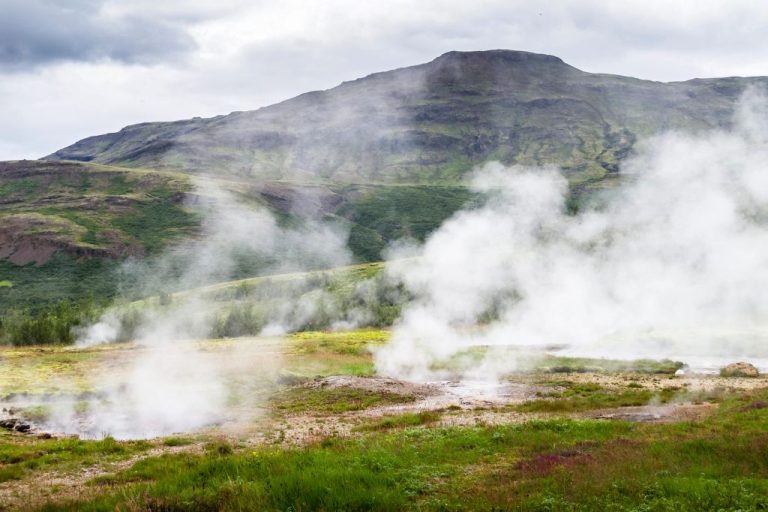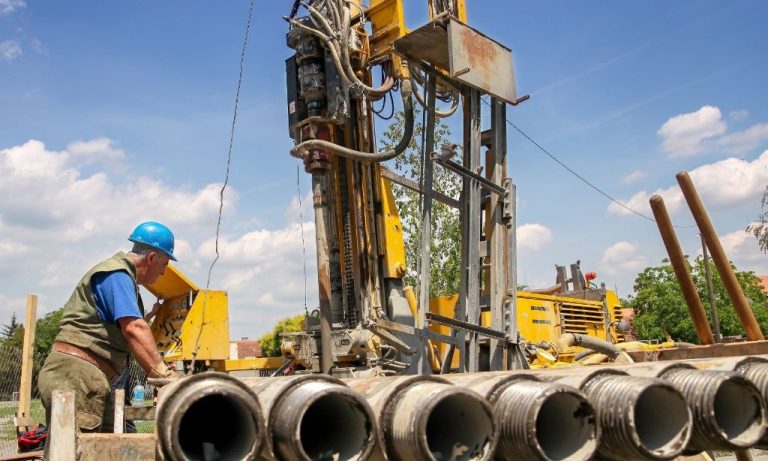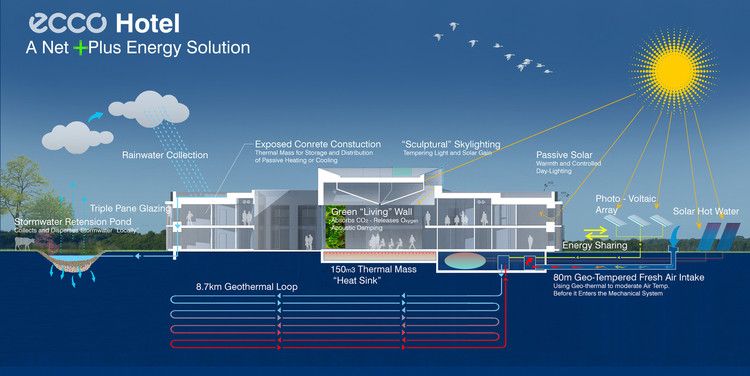What Are 5 Things That Can Be Powered By Geothermal Energy?
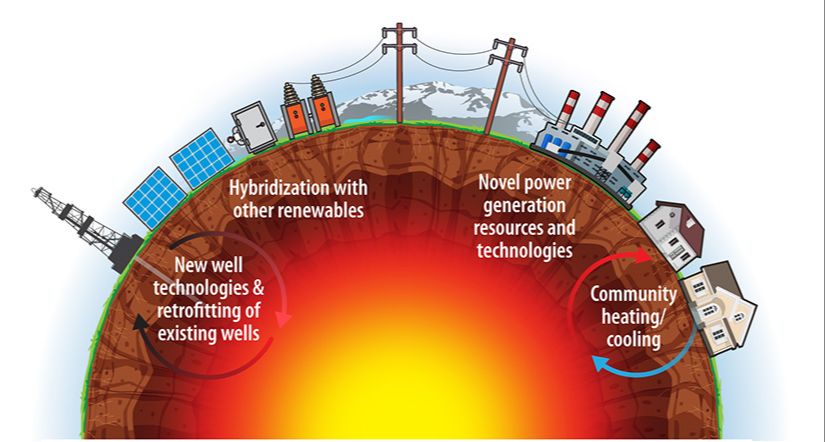
Geothermal energy is heat energy that comes from underground hot water and hot rocks located near the earth’s core [1]. The word “geothermal” comes from the Greek words geo (earth) and therme (heat) [2]. There are reservoirs of hot water found a few miles or more below the Earth’s surface that can be used to generate electricity or provide direct heating and cooling [3].
Geothermal energy works by tapping into the heat beneath the earth’s crust to generate electricity or provide heating and cooling. Wells can be drilled into underground reservoirs to pump hot water or steam to the surface. The steam can be used to drive turbines connected to electricity generators. The hot water can be used directly for heating or can heat secondary fluids that circulate through pipes in the ground or through buildings as a clean, renewable way of providing heat [3].
Some key benefits of geothermal energy are that it is renewable, sustainable, and environmentally friendly. Once in place, geothermal power plants produce minimal emissions and release very few greenhouse gases. Geothermal energy is also available 24/7, making it a reliable and consistent source of power [1].
Generating Electricity
Geothermal energy can be used to generate electricity in geothermal power plants where the earth’s underground heat is captured through hot water or steam reservoirs found deep within the Earth’s crust. The hot fluid containing the thermal energy is brought up through production wells and this heat is converted into electricity at power plants. There are three types of geothermal power plants:
– Dry steam power plants that use steam from underground steam reservoirs to directly turn turbines and generate electricity. Countries like the U.S., Italy, and New Zealand use this technology.
– Flash steam power plants that pull deep, high-pressure hot water into lower pressure tanks and use the resulting flashed steam to drive turbine generators. U.S., New Zealand, Iceland, and Indonesia utilize flash steam plants.
– Binary cycle power plants that pass moderately hot geothermal fluid through heat exchangers to heat a secondary fluid with a lower boiling point that vaporizes and drives turbine generators. Binary cycle plants are found in the U.S., Philippines, and Germany.
Heating and Cooling Buildings
Geothermal heat pumps are an efficient way to heat and cool buildings by using the stable temperatures underground. These systems pump water or an antifreeze solution through pipes buried underground to transfer heat between the building and the earth [1].
For residential and commercial HVAC systems, geothermal heat pumps are an energy-efficient, environmentally friendly alternative to traditional furnaces and air conditioners. During colder months, the pumps transfer heat from underground into the building. In warmer months, the process is reversed to transfer heat from the building into the cooler earth [2].
Compared to conventional HVAC systems, geothermal heat pumps can reduce energy use for heating by up to 50% and for cooling by up to 40%. These systems also last over 20 years and have low maintenance requirements. Geothermal works for all building types from single family homes to schools, offices, and factories [2].
Greenhouses
Geothermal energy can be used to heat greenhouses, providing a consistent and stable source of heat ideal for growing plants (source). Water or antifreeze solution is pumped through pipes buried underground where the temperature is 50-60°F year-round. The liquid circulates through a heat exchanger inside the greenhouse, transferring geothermal heat into the greenhouse air.
Using geothermal energy for greenhouse heating provides several benefits for growing plants. The steady underground temperatures allow for consistent heating without temperature swings that stress plants. Geothermal heating reduces the risk of plant loss due to overheating, and allows greenhouses to maintain optimal growing temperatures year-round (source). This results in faster plant growth and higher crop yields.
There are examples of successful geothermal greenhouse projects across the United States and globally. Cornell University built a 3,850 square foot research greenhouse heated entirely with geothermal energy. The Mt. Hood Community College in Oregon uses a geothermal heating system to grow tropical plants in temperate climates. Larger commercial greenhouse operations are also utilizing geothermal energy for tomatoes, cucumbers, flowers and other crops.
Aquaculture
Geothermal energy can be used to heat water for aquaculture applications like fish hatcheries and tanks. Optimal water temperatures are crucial for healthy growth and survival rates of fish and other aquatic life. According to the Montana Department of Environmental Quality, “Geothermal aquaculture uses naturally occurring warm water to accelerate the growth of fish, shellfish, reptiles, amphibians, and aquatic plants. Aquaculture is the controlled cultivation and harvest of these aquatic organisms”[1]. The consistent warm temperatures provided by geothermal energy sources create ideal conditions for aquaculture facilities.
Direct Use Geothermal explains that “Using geothermal water in aquaculture (fish farming) to keep water temperatures consistent increases survival rates and promote faster growth”[2]. Facilities that rely on geothermal heating report improved health and growth for aquatic species. The Department of Energy found geothermal resources can be used for “fish breeding, hatching, growing, etc.”[3] The warm, mineral-rich water is beneficial for the entire lifecycle of fish and other aquatic plants and animals.
Food Dehydration
Geothermal energy can be utilized to power food dehydration processes, removing moisture from fruits, vegetables, meats, and other foods to extend shelf life. The constant heat from geothermal sources provides an energy efficient way to operate dehydrators and dryers (Think GeoEnergy, 2020). In Latin America, the first industrial-grade food dehydration facility powered by geothermal energy was installed at the Domo San Pedro geothermal power plant in Mexico.
Solar-geothermal hybrid systems can further improve the efficiency and sustainability of food dehydration. Solar thermal collectors provide additional heat for the drying process during daylight hours, while geothermal heat sustains operation at night and on cloudy days. Studies have shown up to a 41% increase in overall efficiency compared to geothermal-only systems (Pérez-González et al., 2021). This combination of renewable resources minimizes fossil fuel usage for food preservation.
Bathing and Swimming
Iceland is renowned for its geothermal mineral baths, which harness the country’s abundant natural hot springs. Facilities like the Blue Lagoon provide warm, mineral-rich waters ideal for soaking and relaxation. The geothermal water contains minerals like silica and sulfur that are beneficial for the skin, and research shows soaking can relieve pain and symptoms from certain conditions like psoriasis and eczema (https://www.visiticeland.com/article/geothermal-pools/). In addition to the therapeutic benefits, these spa-like geothermal baths offer a unique and luxurious experience.
Geothermal energy also allows for water parks with pools heated by natural hot springs. Iceland has many of these facilities, like the Laugarvatn Fontana spa which combines geothermally heated baths and saunas with attractions like water slides (https://www.re.is/blog/hot-springs-and-geothermal-pools-in-iceland/). These geothermal water parks provide family-friendly recreation and the health benefits of soaking in mineral-rich hot spring water.
Industrial Applications
Geothermal energy can be used to provide heat for various industrial processes. According to energyeducation.ca, “Geothermal industrial heat is the use of the Earth’s natural thermal energy in order to provide heat to industries.” One of the main applications is geothermal process heating, which involves using geothermal heat for purposes like pasteurization and washing in breweries, dairy processing, fruit and vegetable drying, and more.
Compared to using conventional fuels, geothermal heating can provide significant cost savings for industries because the fuel (hot water or steam from geothermal reservoirs) is free. The geothermal-energy.org paper on “geothermal energy direct application in industry in Europe” states that geothermal energy “is used in the basic processes of: preheating, washing, peeling and blanching, evaporation and distilling, sterilising, drying and refrigeration.”
Overall, geothermal resources allow many industries to reduce operating costs and increase profitability by replacing purchased fuels with geothermal heat.
Agricultural Applications
Geothermal energy can provide many benefits for agricultural applications. One major use is geothermal soil warming. Piping geothermal fluids through the soil can maintain soil temperatures above freezing, extending growing seasons by weeks or even months (Agritech Tomorrow). This allows farmers to grow crops earlier and later in the year when prices may be higher.
The constant warmth also promotes faster plant growth. With soil temperatures held steady, plants are not subjected to cold shocks that can stunt development (Agritech Tomorrow). Geothermal heating shortens maturation times and increases yields. It enables year-round cultivation of heat-loving crops that normally could not survive colder seasons.
In addition, geothermal fluids provide a source of essential nutrients and minerals that enrich the soil (ReliefWeb). This further enhances plant health and productivity. Overall, geothermal technology can vastly improve agricultural output and incomes for farmers.
Conclusion
In summary, geothermal energy has the potential to power a wide range of applications, from generating electricity to heating buildings, greenhouses, and pools. Some of the key things that can be powered by geothermal energy include:
1. Electricity generation – Geothermal power plants use high temperature hydrothermal resources and Enhanced Geothermal Systems (EGS) to generate electricity. Geothermal provides reliable baseload power that complements intermittent renewable sources like wind and solar.
2. Heating and cooling – Geothermal heat pumps use shallow ground temperatures for space heating and cooling in buildings. This can reduce energy costs by up to 70% compared to conventional HVAC systems.
3. Greenhouses – Geothermal heating allows greenhouses to be cost-effectively operated year-round, even in colder climates. This provides local and fresh produce regardless of season.
4. Aquaculture – Geothermal waters can be used to heat fish farms and hatcheries, boosting fish growth and allowing for indoor, climate-controlled facilities.
5. Food dehydration – Geothermal heat can replace fossil fuels in food dehydration processes, reducing operating costs and emissions.
Geothermal is a renewable baseload resource that offers reliability, affordability, and sustainability benefits. With continued growth and technological innovations, geothermal has the potential to play a major role in the global transition to a clean energy future.

